Thanksgiving in Kosrae
Happy Thanksgiving! So, what’s Thanksgiving like in the tropics where turkeys and cranberries are about as rare as coconut trees in Massachusetts?
Ever since the arrival of American missionaries in the mid-1800s, Kosrae has always had a close relationship with the US. Although Kosrae has adopted many American traditions — including Thanksgiving — Kosraeans celebrate Thanksgiving in their own way. The day starts with everyone going to church.
Kosrae has four big villages which rotate the honor of hosting Thanksgiving. This year my village (Malem) was where everyone gathered to give thanks. The congregations of each of the other three big villages (Tafunsak, Lelu and Utwe) along with one small village (Walung) came to Malem on Thursday and brought their full choirs with them.
Although the service is in Kosraean, it’s a Congregational Christian service so I can guess which prayers are which and say “Amen” when appropriate. For me, the highlights are the choirs. They’re huge — with about 200 singers in each choir. Men wear white shirts. Women wear matching dresses. They sing a capella. There’s no choir director standing in front to keep them on tempo. The performances are well-rehearsed and quite moving.
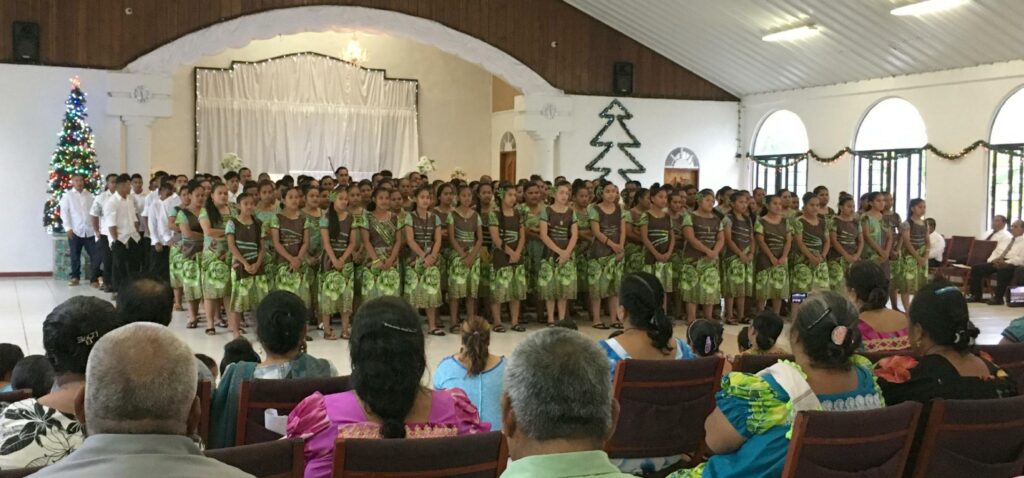
At the high school, I have students from both Lelu and Malem so I know a lot of the youth in these two photos.
Food accompanies every activity in Kosrae. Thanksgiving is no exception. After the service, everyone gets a free meal in the courtyard outside the church. I was pleased to see lots of fruits on this occasion. Helpers piled my plate high with papayas, bananas, tangerines, rose apples and pandanus. This was my first time tasting Pandanus — an interesting and unusual fruit. Not bad.
After church, there was time for a siesta before the evening feast to which I was invited (read adopted) by the Tilfas family in Lelu. Two of the young men in this family teach at the high school with me. Their uncle George is one of my connections with the College of Micronesia.
Kosraean families are huge and so are their feasts. Foods were prepared at several households. I was amazed by how many cars and pickups delivered dishes, plates, trays and troughs of food. Counting babies and toddlers, there were about 50 family members present for the feast — yet tables were loaded with enough food for 100. My host George apologized that not everyone in the family could join us for dinner. There was pig, chicken, fish, sushi, lobster, taro, breadfruit, rice, yams, coconuts, tangerines and bananas. There was even a turkey. I opted for extra helpings of two of my favorite foods: Coconut and lobster. I was sent home with enough leftovers to last me until Monday.
As the only outsider, I was treated like a guest of honor. With my family far away, I gave thanks for being able to celebrate Thanksgiving with the loving and happy Tilfas family.
Kosraeans have a lot to be thankful for. One reason to be thankful is that we’re still 100% virus free. From the photos above, it’s plain to see that no one wears masks here. There’s no need for social distancing. Life in Kosrae goes on as it always has. Our only limitation is that no one is allowed to come to Kosrae because of the travel ban that’s been in effect since March. In the past month, some of our neighbors have relaxed their travel bans. Now they have the virus. Micronesia is one of six nations that are still completely free of the virus.
Still, there are a few hundred Micronesians who’ve been stuck in Guam and Hawaii for several months. They urgently want to come home for Christmas Their appeals have convinced Micronesia’s government to start the repatriation of some of these Micronesians next month. On December 5th, a sanitized US military plane that’s part of Operation Christmas Drop will deliver about 40 Micronesians to the capital island of Pohnpei. Before leaving Guam, these Micronesians will have spent 14 days in isolation being tested daily for Covid-19. On arrival in Pohnpei, they’ll spend another 14 days in isolation, again with daily testing. If they still show no symptoms of Covid-19 and they still test negative, a few Kosraeans will be allowed to come to Kosrae in time for Christmas. We’re all crossing our fingers that they won’t bring the virus with them. Life in Kosrae would be very different if we all had to stay 6 feet apart.
Changing to a minor but curious topic, in the 8+ months that I’ve been on Kosrae, I’ve noticed that the $1 bills on Kosrae are all getting very dirty and worn. This is no surprise since there’s been no commerce between here and the rest of the world for almost nine months. Our two banks have no way to replace old currency with new bills. If this keeps up much longer, our American currency will start looking like the currency of Bangladesh. I got curious and decided to take a close look at the coins in my pocket. I was stunned that, of the six pennies in my pocket, three of them were “wheat” pennies from the 1930s. What would be the chance of this happening in the US? When Micronesia became a protectorate of the US. at the end of World War II, America brought currency to these islands. Although our paper money has been recycled, Kosrae has been circulating the same coins for 75 years. According to Cointrackers.com, these old pennies are worth 25¢.
Visitors here often ask how to pronounce Kosrae. It should be pronounced as if it were written Koshrae — with an “h” in the middle of the name. An easy way to get the accent and pronunciation right is to say “Kosher Rye” three times fast. The third time, you’ll be pronouncing my island’s name the way the locals do.

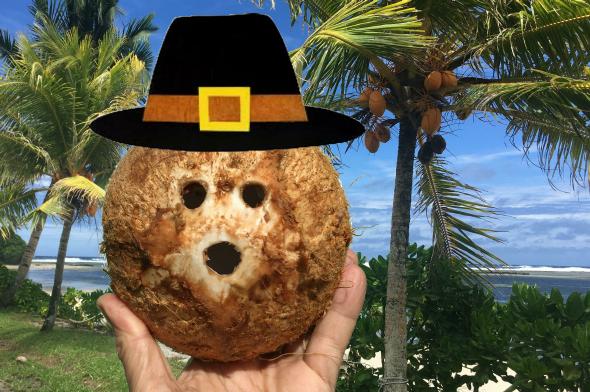

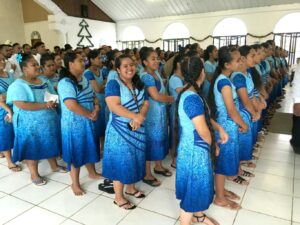

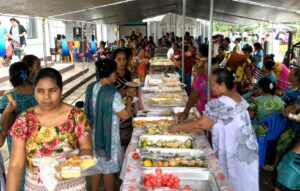



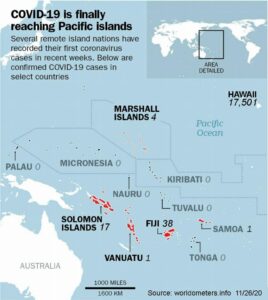

Have missed your reports., Thank you. If I could drop into Kosher-Rye for one day, it would be so as to be able to attend a church service, WOW!
Happy Thanksgiving, Mr. Zoa. Thank you for observation and attendance on a Special day like this including the currency noted. Just when we thought we’re catchingup with the developed countries, you’ve noticed already. Thank you, sir.
Happy Thanksgiving, Nick! Looks like you had a beautiful feast day with incredible choir music! You are in paradise.
Jerry and I are in Palm Springs for 5 months. Played golf and enjoyed turkey dinner after. Sending you much love!💜♥️❤️
Hi Nick,
You hit it out of the ballpark with that one! One of the your best newsletters, and that’s saying something. Perhaps your use throughout the letter of ‘we’ and ‘we’re’ were intentional, or maybe subliminal, but certainly indicative of where you’re finding your head after these past nine months.
Wonderful Thanksgiving thoughts. Trish and I just shared a few bottles of wine and some cheese and crackers with an old friend from Sausalito who recently began her new life here in Portugal.
All my best,
Marvin
Hi Nick! I’ ve missed your day life stories!
Something which touch me particularly beside your attractive way of describing the world, , is the fact that no one is wearing. a mask while enjoying their life.. this marks that life of western countries citizens has been taken to the hell. I’m so happy to see a light even if it is far away from where I live. I have to organize my trip to those Places to awake my self from a nightmare around us. Keep safe and happy Nick!
It looks like you had a most wonderful day. What a wonderful life! Hope the island continues to stay healthy when some residents come back home. Great to have an update from you. Warmest regards from both of us. Nancy and Jim.
Wow, Nick. You’ve done it again. Enriched all of our lives by showing us how another culture gives thanks. Your beautiful writing, personal perceptions, captivating photography, thrilling audio moments all blend together to offer not just an informative but also a deeply emotional experience, It comes as no surprise that you’re not first in line to board the plane when flights resume.
A real surprise to me from your previous blog is the extent to which Kosrea [kosher-rye] and its inhabitants today have personal connections to the U.S. That many have visited the U.S. and were happy to return home comes as no surprise — thanks to your portrayals of the people and their lives.
I, for one, am in eager anticipation of hearing about Christmas in Kosrea. While the “Drop” will be bringing some Kosreans home, it nevertheless feels like an intrusion into a tranquil, covid-free world. After all, invaders from the outside have already decimated their population once before.
Stay safe and well. Thank you for staying in touch!
Rosemary Hoffmann
All of your posts really bring back memories. I’m pretty sure we lived in Lelu back in 1983. Great stories and documentation about a very beautiful part of the world. Happy Thanksgiving!
Happy Thanksgiving, Nick! It sounds like yours was happy. It was a chilly day in Michigan, but warm pie helped. My sister brought dinner to me, and I gave her pie in return. It was a quiet day.
If you spot a 1943? steel penny, take it out of circulation. They were made of steel, so copper could be used for the War. It’s interesting that the pennies are old there!
I watched your Top 15 places in the world. They are beautiful.
I’m glad you’re safely tucked away in a tropical paradise. It’s getting a bit out of control here.
Peace and smiles to you, Nick.
Oh My! A Thanksgiving celebration, amazing grace!
Joyful in faces, song & colorful dress!
Your extended family in Kosrae are beautiful. I’m very grateful to know somewhere in the world is 100% CoVid free, wow, where gatherings are unlimited and hugs are real warm embraces !🤗 Lucky man you are.🥂
Hi Nick
Another fantastic piece with photos/music. We all enjoy them so much. I think most of wish we could be there, virus free!! England is still in lockdown and then moving into different tiers next week. Keep up the good work!
Meggie
Choir sounded very strong and confident in the one-minute snippet. Hope the precautions allow for a safe holiday repatriation.
Mind blowing to see all those people without masks. I’m SO used to masks being the norm. How nice to see a bit of the world moving forward normally. Fingers crossed that you can stay virus free.
My Thanksgiving leftovers lasted one week. A 17 pound turkey for two people will do that!
Thank you for sharing the one minute recording of choir singing on Thanksgiving. It sounded rich, fully harmonized, and balanced – very much like the choirs I enjoyed hearing in Samoa forty years ago. I don’t know what the holiday greetings are in Micronesia, but in Samoa you would be wished “Manuia le Kirisimasi”. Blessings to you and your students and villagers of Malem.
Hi, Nick,
Thanks again for your Thanksgiving posting! I hope you’re thoroughly enjoying the Christmas season, as well.
Merry Christmas from central Florida, Ray